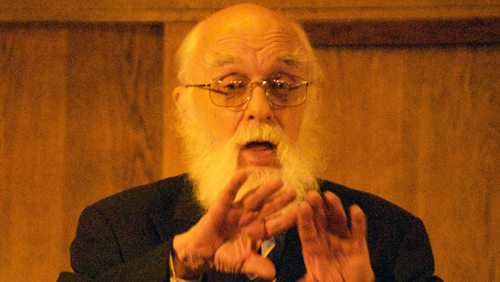The Case Against “Tolerance”

Here’s a shocking bit of news: Plans for a big, shiny Museum of Tolerance in Jerusalem are not going smoothly. This multi-part attack last month in the newspaper Haaretz blames well-connected Californians for trying to impose their culture, and their titanium-and-glass, swoopy-modern building (designed by Frank Gehry), onto an ill-suited city. This seems to be a common local reaction to the project—”so hallucinatory, so irrelevant, so foreign, so megalomaniac,” in the words of Meron Benvenisti, a former deputy mayor. (Among the most important ironies in the story: The vast monument to tolerance was to be built on top of a former Muslim cemetery.) But the deep roots of the trouble may not lie in any particular person or group. The real problem may be the idea of tolerance itself.
I’ll be the first to admit that intolerance is an ugly phenomenon, and that Jerusalem compactly embodies it. Unless you hold the city sacred, you probably see it as an almost comically awful place: A collection of “stony hills, stony tombs and stony hearts,” Herman Melville called it, where people are too busy listening to God to care about human beings. This is the city, Amos Elon wrote, that cherishes ruins and ghosts much more than life. I met people there who burned with contempt for humanity; it was the obverse side of love for their perfect deity. (Elon: “In the high noon of the ghosts, the human dimension is lost.”)
Different versions of God’s will can’t be reconciled, and all versions look like a sad joke to those of us who see just a pile of rocks. So few spend time in Jerusalem without wishing very hard that some other types of person would vanish. It’s not just a city where Jews, Christians and Muslims have fought; it’s a place where Christian denominations battle over their different pieces of the Church of the Holy Sepulcher; where religious Jews throw stones at the secular; where Muslims battle Muslims. Secular people, for whom the different claims are equally absurd, often end up appalled. Elon quotes Sigmund Freud, for example, who said the city had “never produced anything but religions, sacred frenzies, presumptuous attempts to overcome the outer world of appearances by means of the inner world of wishful thinking.” See what I mean? Jerusalem breeds intolerance in everybody.
Now, it’s tempting to characterize this intolerance—this itchy urge to scratch some people off the earth and out of one’s sight—as a kind of illness or genetic flaw. That is, I think, the ideology of the Simon Wiesenthal Center’s network of museums and centers dedicated to tolerance. The Center erected its first Museum of Tolerance in Los Angeles in 1993, and announced plans for a Jerusalem satellite in 2002. (Read the Haaretz series for the details of its rough road since, which included Gehry dropping out last winter and a long court case by Muslims who didn’t want this thing built on the site of the ancient Mamilla cemetery.)
The goal of the museums of tolerance is to identify and cure an ailment: to “promote unity and tolerance among Jews and people of all faiths by means of an environment free of political, theological or ideological viewpoints,” as the backers (quoted by Haaretz’ architecture critic, Esther Zandberg) put it.
Trouble is, intolerance is not a malady. It’s one of the unavoidable mental states we all go through constantly. In other words, it’s more like sadness or restlessness than it is like herpes or malaria. It can be understood, managed, reduced by reflection and self-awareness. But it can’t be cured.
To see why, consider what philosophers call the “paradox of tolerance,” which arises whenever the tolerant person meets intolerant characters. What does she do about them? If she accepts them, she accepts intolerance, which violates her ethos. If she rejects the intolerant, she is being, um, intolerant.
Why aren’t societies tied into knots by this paradox? Because no one is tolerant of everything. And no one should be, as many wise people have noticed. Most of us, after all, are intolerant of serial killers, child abusers, and corporations that violate the law. Intolerance is one of life’s necessary mental states. The mass murders of the 20th century didn’t occur because people are intolerant in general, but rather because their intolerance was exaggerated and misdirected by politicians and media manipulators.
So the problem of mass violence lies in the “viewpoints” that create those distortions. Remove politics, religion and ideology from the picture, and you don’t see how particular people, in particular places, have exploited this aspect of human nature. Instead, you’re left with a general precept—let’s tolerate everyone!—that no one could or should live up to.
Such an ideology pushes people toward hypocrisy, as Nalini Ambady and her colleagues have demonstrated in a study that showed how American schoolchildren will pretend not to see race even when it’s relevant. (To the Boston area fifth-graders in her experiment, it was more important to appear bias-free than it was to acknowledge reality.)
Second, the ideology of tolerance masks the painful realities of contemporary violence. For instance, Jerusalem’s Museum of Tolerance, if it is ever built, will go light on the grievances of Palestinians, because it’s not supposed to mess around in politics. Visitors will deplore intolerance in general without pondering much about the grievances of people 100 feet away. As Esther Zandberg put it on one of her many fierce attacks on the project, “the intolerance in Jerusalem is political.”
Finally, a generalized notion of tolerance subtly promotes Us-against-Them thinking. Think of it this way: Imagine you have a neighbor who cooks weird-smelling food and speaks an incomprehensible language. If you feel that you must be tolerant of her, and hide any uneasy feelings you have in her presence, you may succeed in appearing unprejudiced. (Jennifer Richeson and her colleagues have measured the physiological and mental costs of that effort.) But your sense of her alienness remains.
On the other hand, suppose you go to a PTA meeting and discover your children are in the same class. What if you were to start talking about your shared experiences as parents of 8-year-olds? In that moment, you aren’t tolerating a member of an alien tribe. You’re sharing experiences with someone who really is, on one dimension, like you.
Tolerance peers over a wall and says “I’m going to keep my mouth shut.” That’s better than shooting, but it still confirms the importance of the wall. Diverse societies aim for better. Their people don’t get along by tolerating each other; they get along by being each other—by feeling, sincerely, that a difference in religion or race or class doesn’t matter, due to a self-evident sameness on some other measure.
Jews and Muslims who made common cause against the Jerusalem museum, for instance, weren’t just tolerating each other. They were appreciating, encouraging and engaging each other as allies. At least the Museum, still officially slouching toward birth, has accomplished that.





